Science
Scientists did not bring dire wolves back from extinction
Did Colossal Bioscience really bring dire wolves back from extinction? Absolutely not. Why not? And what did they do then?
If you’re anxiously awaiting the totally legit paper about the very real megastructures under the pyramids, why not read others from the researchers dn790003.ca.archive.org/0/items/C… (PDF)
Women in tech history: Hedy Lamarr — Hitler, Hollywood, and Wi-Fi 📽️
This is the sixth article in a series about amazing women in tech history. Previous entries have featured Margaret Hamilton, Grace Hopper, the ENIAC programmers, Katherine Johnson, and the women of Bletchley Park.
Today’s entry is a bit of an anomaly. We’ve covered some inspiring women in this series but most of them aren’t well-known to the general public. This is particularly true for the ENIAC programmers, who were forgotten for most of their lives; and the women of Bletchley Park, who had to keep their life-saving work secret for 30 years. Hedy Lamarr, on the other hand, was a household name in the western world. She was the highest-earning woman in Hollywood at the peak of her acting career and was often described as the most beautiful woman in the world.
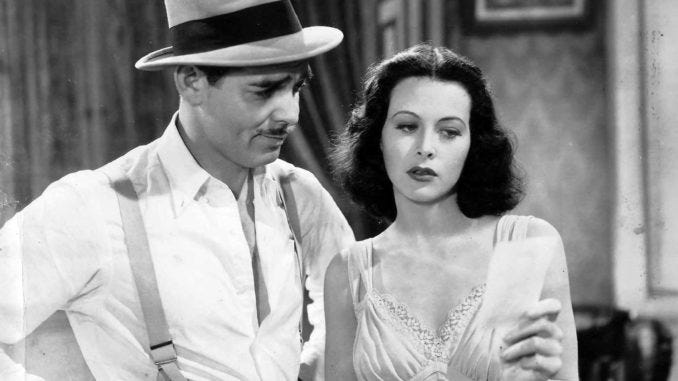
Photo: Publicity photo for Comrade X, public domain.
Lamarr got her biggest parts in movies because of her looks, which is something she regretted all her life. She became typecast for her glamour and was given few lines compared to the men she starred with. She had a creative and scientific mind and was described as someone who always came up with solutions to problems. Many people in her life didn’t actually know this about her because they made assumptions based on her appearance. Can someone be eye-candy and smart? The sexism of Hollywood drove her to be creative in other fields and she went on to invent technology that has almost certainly influenced your life.
Having Hitler for dinner
Hedy Lamarr was born Hedwig Eva Maria Kiesler in Vienna, Austria, in 1914. Lamarr began acting at a very young age and small parts in theatre productions as a child. She was eventually spotted as a teenager by German producer Max Reinhardt, who brought her to Germany to train in theatre but she soon entered the film industry. Lamarr was only 18 when she starred in Ecstasy, a controversial 1933 film where she played the ignored wife of a distant husband. This role made her famous in Austria but not necessarily for the best reasons. It was seen as controversial for showing such a young woman naked and faking orgasms.

Photo: Publicity photo for Comrade X, public domain.
In 1933, the same year that Ecstasy had brought her so much attention, Lamarr married one of the richest men in Austria: Friedrich Mandl, a munitions manufacturer and merchant. Although half-Jewish, he supplied weapons to Mussolini and had close connections with the Nazis. Together they lived in a huge castle and held parties there with the likes of Mussolini and Hitler. Even by the age of 18 her life was far from ordinary.
According to Lamarr, Mandl was a jealous, controlling man and didn’t want her to continue acting for fear she would star in something like Ecstasy again. She was kept in the castle and described feeling like a prisoner. Most of her social interaction was with fascists as she was forced to accompany Mandl to his business meetings. This was a difficult time for Lamarr but there was a positive to take from it all. Many of the meetings were with military scientists discussing advanced technologies and it fascinated her. This was when she began to focus some of her time and resources in science and apply her natural creativity to fix real problems.
The escape
In 1937 Lamarr couldn’t live in that castle any longer but was sure Mandl wouldn’t allow her to leave. According to her autobiography, she disguised herself as a maid and sneaked out. She didn’t just want out of the castle, she wanted to be as far away as possible. She made her way to Paris where she met MGM head Louis B. Mayer, who was scouting for foreign talent. He convinced her to come with him to America to star in Hollywood films.
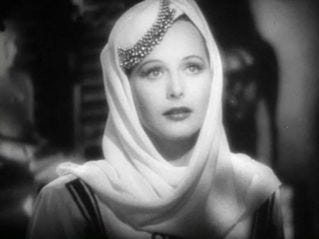
Photo: Hedy Lamarr in Lady of the Tropics. Trailer screenshot, public domain.
From 1938 to the late 1950s Lamarr dominated Hollywood. Much to her displeasure in later life, she wasn’t necessarily loved for her acting abilities or personality but for her looks alone. She was seen by many as the world’s most beautiful woman and the marketing directors recognised this so they played into it. Her foreign accent and mysterious stage name only added to the image that made her the pin-up of choice for many soldiers fighting abroad.
Lamarr seemed to have it all. She was rich, famous, and admired. But in many ways she was still a prisoner. Much like she felt trapped by Mandl and his castle, Hollywood trapped her because of her looks. She was increasingly given roles that were highly sexual with very few spoken lines. She became typecast in such a way that she appeared to many as a face rather than a person. She obviously knew there was more to her than eye-candy and this attitude sometimes caused problems with executives.
I was the highest-priced and most important star in Hollywood, but I was “difficult.”
She grew bored and needed another outlet for her creativity. With World War II on everyone’s mind and exciting technological advances happening at the same time, her interest in science was stronger than ever. She wasn’t given the freedom to invent anything on screen so she took to inventing things in the real world.
Frequency-hopping
Lamarr spent years working on inventions, many of which were successful in the fact that they worked but didn’t necessarily go anywhere commercially. These includes improved traffic lights, improved tissue boxes, and even a pill that turned water into a carbonated beverage. She had been interested in torpedoes and radio technologies since her time in Mandl’s castle, hearing scientists talk about the weapons on Nazi U-boats. During World War II, she turned her attention to inventions that could help in the fight.
She knew from those meetings that remote controlled torpedoes weren’t a good option because radio-jamming could protect Nazi boats. As long as you knew the frequency, you could disrupt the signal to the torpedo. She puzzled over ways to protect torpedoes and hit upon a solution when she met the film composer George Antheil. He used strange instruments and arrangements in his music and liked to tinker and invent much as Lamarr did. She was inspired by his use of multiple pianos roles to move music from one piano to another without missing a beat.
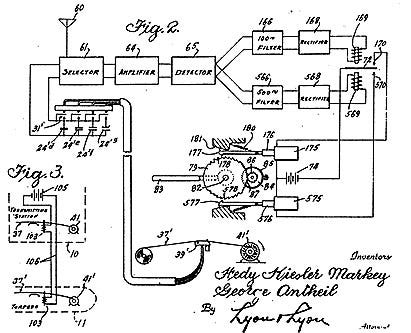
Image: A figure from the 1942 patent. Via Flickr/Floor, distributed under a CC BY-SA 2.0 license.
Together, they successful patented a genius technology, frequency-hopping spread spectrum (FHSS), which would use the piano roll to protect radiowaves from being jammed. Just as the music could transfer from one piano to another by carefully synchronising the piano rolls, radio signals could be switched to other channels using the same method. By doing these switches in a pseudorandom order known only by the transmitter and receiver, it would be impossible for the Nazis to jam or read the signal. At best they could jam one frequency but the torpedo would only be out of communications briefly until the next frequency hop.
The patent was made on 11 August, 1942, but the Navy turned it down. They didn’t fully appreciate its value, the technology would be difficult to implement, and they were reluctant to use patents that didn’t come from within the military. In the 1950s the technology was taken by engineers at Sylvania Electronics Systems Division for in military communications and by the 1960s an upgraded version was indeed being used to control torpedoes.
It’s all around us
Frequency-hopping spread spectrum is one of the most important aspects of Code division multiple access (CDMA), which is in many technologies we use today. One of its first is in GPS, which you use every time you check your location in your smartphone’s maps app. Mobile phones also used CDMA for phone signals and if you’ve ever downloaded something over a 3G network you were using technology built around Lamarr and Antheil’s invention. With frequency-hopping spread spectrum technology being all around us, it’s easy to take it for granted, but the invention should be admired and respected for being so creative and ingenious.
Despite the work influencing so much technology that dominates our lives, they never received much recognition for the work. Lamarr didn’t receive any money for the use of her patent by the Navy or by phone companies. Like many of the women in tech history we’ve written about, Lamarr was largely ignored for most of her life when it came to science and technology. Now there are a few books about her life and movements to get her recognised. The latest project was a documentary about her life to be filmed by Reframed Pictures. Here’s Susan Sarandon talking about the project:
People started to make the connection between the Hollywood superstar and frequency-hopping in the 1990s. In 1997 she finally received recognition for her work when the the Electronic Frontier Foundation gave her the Pioneer Award. According to her biographer Richard Rhodes:
When they called her up to tell her she would get the award her first words were, Hedy Lamarr being Hedy Lamarr, “Well, it’s about time.”
Lamarr was in her 80s when she received this recognition then died shortly after of heart failure in 2000. In 2014 both co-inventors of the technology were inducted into the US National Inventors Hall of Fame.
Scared money
Lamarr didn’t think she was necessarily smarter than people around her. Instead, it was her attitude that set her apart. She asked questions. She wanted to improve things. She saw problems and knew they didn’t have to be problems. Some people in her life saw it as the wrong attitude and she was often criticised for being a difficult star. But Lamarr was doing exactly what she wanted to do so was clearly winning. And how did she win? As she said in Popcorn in Paradise:
I win because I learned years ago that scared money always loses. I never care, so I win.
“Scared money” refers to being so afraid of losing that it impairs your decision-making and makes it more likely that you will lose. Lamarr was able to let that go. She had the world’s eyes on her just waiting for a mistake yet she made it in Hollywood and when that didn’t appeal anymore she contributed to technology you’re likely using while reading this. She was beautiful, smart and talented but none of that guaranteed success in male-dominated fields. What mattered most was that she wasn’t afraid.
Lamarr faced sexism like all the women in this series but in arguably more unusual circumstances. She wasn’t just a woman in tech; she was also a superstar admired for her beauty. According to Lamarr, this meant she faced two very different sides of misogyny. Some people assumed, from looks alone, that she wasn’t smart. Others assumed that if she was smart then it was a negative aspect of her personality. Her smarts were likely a devious, deceptive, untrustworthy intelligence and this was a problem rarely said about attractive male leads. Sometimes you just can’t win, except she eventually did. She won because scared money always loses and she wasn’t afraid to be herself.
This is the sixth article in a series about amazing women in tech history. Previous entries have featured Margaret Hamilton, Grace Hopper, the ENIAC programmers, Katherine Johnson, and the women of Bletchley Park.
Women in tech history: Bletchley Park
This is the fifth article in a series about amazing women in tech history. Here we look at the women of Bletchley Park who saved many lives during World War II.
The difference between “homeobox” and “Hox” genes
This is a big pet peeve: the terms “homeobox” and “Hox” are not interchangeable. They mean different things. I’m correct in saying that Amphioxus (Branchiostoma lanceolatum) has 15 Hox genes but I’m also correct in pointing out that it has over 130 homeobox genes.
Gene names can be very confusing and difficult to remember, so there are many abbreviations and acronyms in biology. For example, the gene insulin-like growth factor 1 is abbreviated to Igf1. I don’t know if that makes it easier to remember but it certainly makes it easier to write about! I believe the use of abbreviations is partly responsible for the incredible confusion over homeobox and Hox genes, and I do mean incredible.
It’s obviously a confusing topic for students, or anyone new to evo-devo, developmental genetics, or gene regulation… but it’s so much worse than that. Science communicators make the mistake, professional publications make the mistake, academics make the mistake and they do it often. I think the reason it keeps happening is that the word “Hox” appears to be a shortened “Homeobox”. All over the internet you will see the terms used interchangeably, and sometimes with the apparently shortened version in brackets: “Homeobox (Hox)”. This otherwise decent glossary at Epigenesys manages to dump the terms homeotic, homeobox, and Hox into one single paragraph and glossary entry, which is of little help to a confused student seeking clarity.
If you’re a student you may have watched science videos by YouTubers like Hank Green and seen the same “Homeobox (Hox)” terminology and the two words being used interchangeably. The first Google result for “homeodomain” (ignoring Wikipedia) is R&D Systems saying, “The DNA sequence that encodes the homeodomain is called the homeobox and homeobox-containing genes are known as hox genes”. This is wrong. A homeobox-containing gene is not necessarily a Hox gene. So let’s clear this up.
First, let’s go over the facts, and what the real difference is, before we discuss why these confusing names have been chosen. Scientists discovered that there are some genes that contain a very conserved region of DNA we now call the homeobox. When I say very conserved, I really mean it. You have homeobox genes, the birds outside do, the grass outside does… even yeast does. The origin of homeobox genes is truly ancient, definitely pre-dating the origin of animals. The 180-base-pair homeobox codes for a 60-residue chain known as the homeobox domain (or homeodomain). In plain English: the region of the gene is known as a homeobox and the region of the resulting protein is the homeodomain. The explanation for why it is so conserved across organisms, through hundreds of millions of years of evolution, is that its function restricts its evolution. The homeobox domain binds DNA (or RNA), allowing a protein with a homeodomain to act in gene regulation. For example, these proteins can be used to turn genes on and off during development. It’s an invention of evolution that’s persisted through the origin of the fungi, plants, and us animals, and the homeobox itself hasn’t changed much at all. So there’s your definition of a “homeobox gene”. It isn’t a specific gene, it’s a huge and ancient group of genes that all contain the homeobox, a region of DNA that codes for a domain which can bind to DNA.
Every Hox gene is a homeobox gene, but not every homeobox gene is a Hox gene. The homeobox genes have diversified so much through evolutionary history that there are now distinct classes of them. The most famous is definitely the family of Hox genes. The terms make sense when you consider their history. When scientists first discovered the homeobox domain, they found it because they happened to be studying animals that had mutated Hox genes. These mutants often had body parts in the wrong place, and were described as “homeotic mutants”. When they identified the genes causing the mutations, they discovered that they all shared a common motif, so they named it the homeobox. This is one of the most incredible discoveries in biology, as they quickly realised that the homeobox is found in genes from humans, flies, jellyfish, daffodils, yeast, and so on. However, the actual genes they had discovered were a distinct group of homeobox genes, which we now call the Hox genes. They definitely are homeobox genes, and they regulate other genes.
Think about the confusion here. Hox genes are a distinct family of homeobox genes. Scientists discovered the homeobox motif by investigating which genes caused homeotic mutations. What they had found were the Hox genes so calling the Hox genes homeotic is fine, that’s the effect they have. However, they didn’t understand at the time that the homeobox motif is found in many genes that aren’t Hox genes. Many homeobox genes have absolutely nothing to do with body parts growing in the right or wrong places but when they named the homeobox, they only knew of the Hox genes they were discovering via the homeotic mutants. This is where almost all the confusion stems from. Despite homeobox genes in general having “homeo” in their name, most don’t cause homeotic mutants if modified. The Hox genes, a specific family of homeobox genes, are great examples of genes that can cause homeotic mutants.
In us bilaterian animals, one of the main roles of the Hox genes is to specify anteroposterior identity to your body. It’s a complicated system, but we’ll keep it simple. The Hox genes play a role in determining which body parts grow where on the body. So by messing with them you can make limbs grow in the wrong places. But as I’ve mentioned there are plenty of other non-Hox homeobox genes. There are entirely different families with entirely different roles. The Hox genes control the body plan along the anterior to posterior axis in us bilaterian animals, but there’s still some uncertainty over their precise role in non-bilaterian animals. The Hox genes do appear to be unique to animals and don’t find them in plants and fungi. Of course you still find they have other homeobox genes, just not the Hox genes, which appear to have arisen very early in animal evolution (there is evidence that sponges had Hox genes too, but have since lost them).
We know so much about homeobox genes, especially the Hox cluster, that we could discuss it all day. The evolution of the Hox, ParaHox, and NK clusters is quite fascinating, as are the roles of these gene families in a developing animal. Understanding the interplay between development and evolution can provide unique insight into both, which is incredibly exciting so do not be put off by the unfortunate naming conventions and mistakes made by others. To summarise: Hox genes are homeobox genes as they contain the homeobox, but homeobox genes include Hox genes, ParaHox genes, NK genes etc. The terms are not interchangeable. It’s such an easy mistake to make that it appears in books, academic websites, and helpful videos on YouTube. Just keep it in mind and focus on what exactly is being discussed. It’s not necessarily wrong to describe a mobile phone as technology, but the terms aren’t interchangeable. You can’t go around describing technology as mobile phones. It makes no sense to say, “the electron microscope is a wonderful mobile phone”. Homeobox and Hox genes work the same way. You can describe a Hox gene as a homeobox gene because that’s exactly what it is. Just note that the terms aren’t interchangeable.
Women in tech history: Katherine Johnson, the mathematician who guided us to the moon 🚀
This is the fourth article in a series about amazing women in tech history. The first featured Margaret Hamilton, the software engineer who helped land us on the moon. The second featured Grace Hopper, a programming pioneer and first woman to be a US Navy Admiral. The third featured the ENIAC programmers, who were pioneers ignored by history.
The women featured so far in this series have been white Americans. There are many more stories to tell and upcoming articles will feature women here in the UK and elsewhere abroad. For now we turn our attention to Katherine Johnson, an amazing woman who faced both gender and racial discrimination in pursuit of her passion. I chose to focus on Katherine in this article because I wonder how many people know that the trajectory for NASA’s first manned mission was calculated by an African American woman.
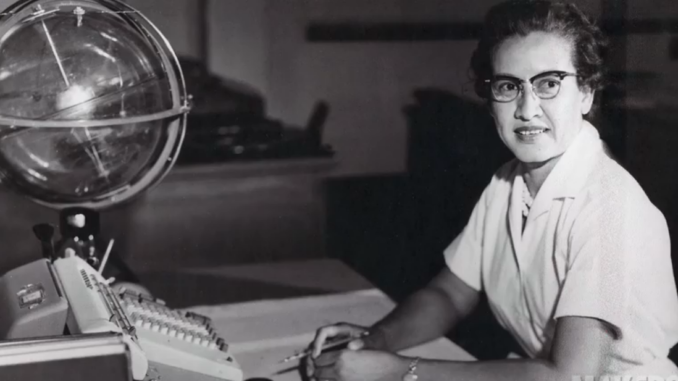
Photo: NASA
Katherine was born in August 26, 1918, which happens to be Women’s Equality Day in the US. Her family lived in West Virginia, where her father was a farmer and part-time janitor. Her mother was a teacher before having 4 children of which Katherine was the youngest. It was clear from a very young age that maths would become a huge part of Katherine’s life.
“I counted everything. I counted the steps to the road, the steps up to church, the number of dishes and silverware I washed… anything that could be counted, I did.”
Her father was desperate to get his children a decent education but had little choice at home; the local school wouldn’t teach African Americans beyond 8th grade. He had to send them to a school 125 miles away from their home. Teachers at the school were amazed at Katherine’s abilities not just with numbers but her reading skills. When she started school she skipped straight to 2nd grade and then later skipped 5th grade meaning she was a grade above some of her older siblings. This acceleration meant she started high school at the age of 10.
Towards the end of high school, Katherine was taught by Schiefflin Clayton who only the 3rd African American to earn a PhD in maths. He instantly recognised Katherine’s talents and love for astronomy. He created entire courses at the school just for Katherine, including analytic geometry, and she was usually the only pupil in these lessons. She finished high school and started college at the age of 14 and had completed a Bachelor of Science degree in maths and French by the time she was 18.
The height of segregation
Katherine wasn’t oblivious to racism growing up but hadn’t experienced the worst of it until she began working. Her first job was as a teacher but she had to travel to Virgina. Her mother warned her that things were worse there than in West Virginia and that she should be careful. Katherine responded, “Well, tell them I’m coming.”
Katherine’s story is one of personal strength. She once told NASA administrator Charles Boldon that she didn’t care too much about racism in her own life. “I didn’t have time for that… don’t have a feeling of inferiority. Never had. I’m as good as anybody, but no better.” Katherine grew up when segregation in the US was at its worst but it wasn’t something that could stop her doing what she wanted to do. She braved the segregated bus commutes and worked as a teacher for several years.
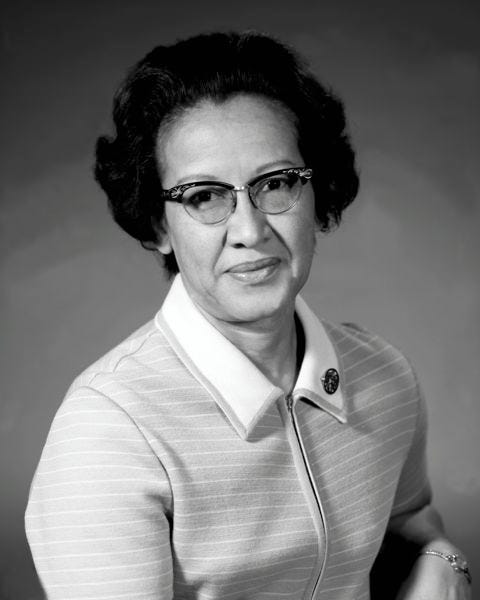
NASA
During World War II, there were shortages for scientists and engineers as many were fighting overseas. This led to the hiring of women mathematicians for important roles during the war. In 1941, Franklin D. Roosevelt signed an order to begin hiring more African Americans too. Two years later, the Langley Research Centre began hiring African American women who studied maths and chemistry to work as “human computers” in a research lab. In 1953, Katherine joined the women at Langley working for NACA, which would become NASA. Katherine didn’t escape racism by joining NASA; the employees were segregated and the reminders were always there. The lab itself was built over a former plantation.
Katherine was not alone when she joined; dozens of African American women worked at Langley as human computers, doing extremely complex calculations for a number of projects in the space race. The job paid better than many alternatives for educated women at the time ($2000 per year) but they were still discriminated against. At the research lab, the women were segregated in “coloured” work-spaces separate from the white women doing the exact same work. They were made to work a mile away from the other women and in facilities that didn’t even have a toilet. The white women were given accommodation nearby while Katherine and her colleagues had to make their own arrangements.
It’s important to note that although this is a story about the life of Katherine Johnson, many African American women contributed to NASA’s space programme as human computers. Most of the complex calculations required by the agency were provided by women and Katherine famously described this as a time when “the computer wore a skirt.” We celebrate the white men who landed on the moon, and rightly so, but rarely the countless women that helped make it happen. Many of those women were African Americans working during the height of segregation. They did their jobs well and helped NASA work with trajectories, analyse data from wind resistance tests, and figure out how spacecraft could re-enter the Earth’s atmosphere without burning up.
One small step
Katherine was respected for her calculations and was a prized member of her team. What made her stand out from everyone else was her questioning attitude. Others did what they were told but Katherine always needed to know more. When she was given new trajectories she would ask what they were for; she asked technical questions about the missions; she asked why the women were never invited to the meetings. It wasn’t long before she caught the eye of her supervisors.
One day she was taken into an all-male group temporarily to assist with calculations. She showed her expertise, asked questions, and they apparently “forgot” to send her back to the other women. She never looked back. Her expertise was calculating the trajectories of launches and where they would land.
“I’d ask ‘where do you want to come down?’ And they’d tell me the spot and I’d work backward form there.”
She was there for the Mercury missions in the 1950s-60s, the Apollo missions in the 1960s-70s, and the space shuttle missions in the 1980s. Her trajectories were used in many of NASA’s most historic achievements.
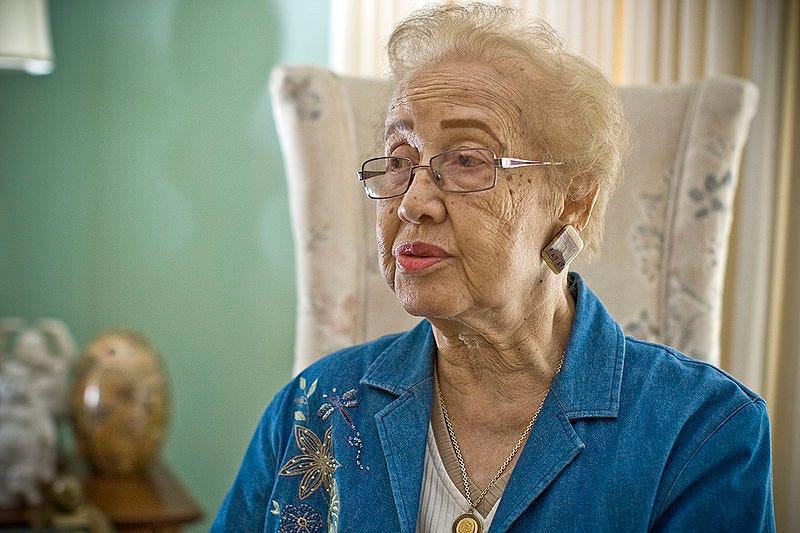
Photo: NASA/Sean Smith
In 1961, Alan Shephard became the first American in space (he’s also famous for hitting a golf ball on the moon) and Katherine calculated the trajectories to get him up there and safely back to Earth. Launches are complicated enough, taking into account things like weather conditions, but soon NASA had her working with orbits too. The following year, John Glenn was to become the first American to orbit the planet and again Katherine was behind the trajectories. For that mission NASA had started using computers for the first time but Katherine’s own calculations were still used to verify that the computers were accurate. The move to computers led to Katherine becoming a computer scientist as well as mathematician.
Katherine was a technical leader during the Apollo missions and played a pivotal role in America’s successful space race. Perhaps her greatest contribution was calculating the trajectories for Apollo 11, the mission that landed humans on the moon for the first time.
“I felt most proud of the success of the Apollo mission. They were going to the moon and I computed the path to get there.”
Later life
Katherine worked on space shuttle and satellite missions before finally retiring in 1986 after 33 years with NASA. During her career she was instrumental in many firsts including the moon landing but also contributed to NASA in more subtle ways. She created space textbooks for the agency; she created star maps that would allow astronauts to pilot themselves home in the event of electronics failures; she co-authored 26 scientific publications; she even contributed work for future missions to Mars.
In retirement, Katherine has been an incredible inspiration to young people and not just because of her past achievements. She has spent decades working with young people to encourage them to take up STEM careers. Over the years her efforts in the space race and in encouraging young people to take up STEM subjects has won her many awards and honorary degrees from universities. Last November, at the age of 97, President Obama awarded Katherine with America’s highest civilian honour: the Presidential Medal of Freedom.
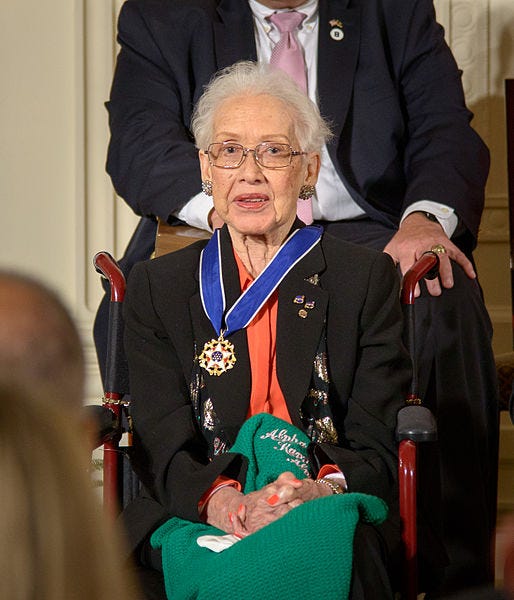
Photo: NASA
Katherine is an inspiration to anyone with a passion. There were many forces in her life that made it difficult to pursue her passion but she overcame them all, including gender discrimination and racial segregation. She didn’t just keep her head down and do the work society expected her to; she wanted to work in a male-dominated field during a time of racial segregation in the US. Katherine believed that she was as good as anyone, “but no better.” Those who worked with her claim she was definitely better. NASA owes Katherine Johnson so much and she will always be a key figure in the history of space exploration.
This is the fourth article in a series about amazing women in tech history. The first featured Margaret Hamilton, the programming pioneer who helped land us on the moon. The second featured Grace Hopper, the programming pioneer who became the first woman to be a US Navy Admiral. The third featured the ENIAC programmers who were pioneers ignored by history. The next is about the women of Bletchley Park, who saved countless lives in WWII but were sworn to secrecy.